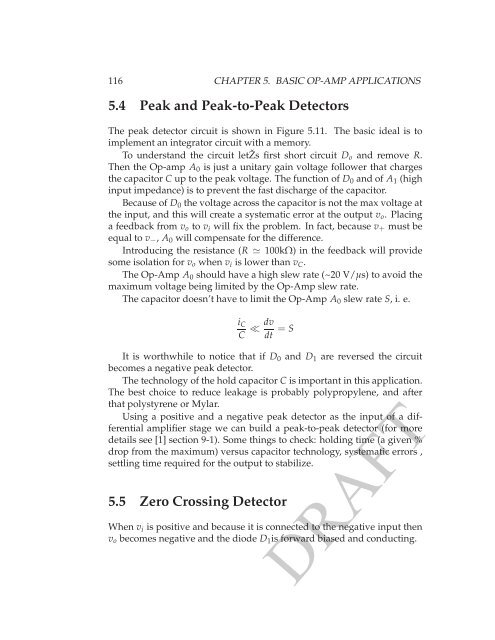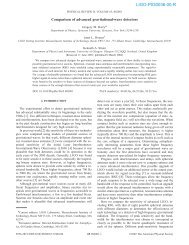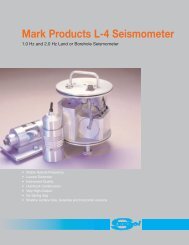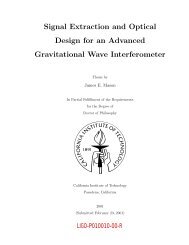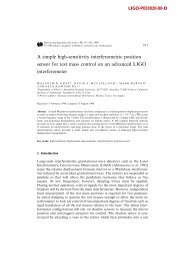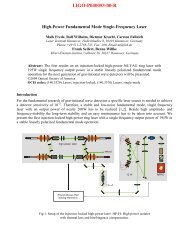Analog Electronics Basic Op-Amp Applications - LIGO
Analog Electronics Basic Op-Amp Applications - LIGO
Analog Electronics Basic Op-Amp Applications - LIGO
You also want an ePaper? Increase the reach of your titles
YUMPU automatically turns print PDFs into web optimized ePapers that Google loves.
116 CHAPTER 5. BASIC OP-AMP APPLICATIONS<br />
5.4 Peak and Peak-to-Peak Detectors<br />
The peak detector circuit is shown in Figure 5.11. The basic ideal is to<br />
implement an integrator circuit with a memory.<br />
To understand the circuit letŽs first short circuit D o and remove R.<br />
Then the <strong>Op</strong>-amp A 0 is just a unitary gain voltage follower that charges<br />
the capacitor C up to the peak voltage. The function of D 0 and of A 1 (high<br />
input impedance) is to prevent the fast discharge of the capacitor.<br />
Because of D 0 the voltage across the capacitor is not the max voltage at<br />
the input, and this will create a systematic error at the output v o . Placing<br />
a feedback from v o to v i will fix the problem. In fact, because v + must be<br />
equal to v − , A 0 will compensate for the difference.<br />
Introducing the resistance (R ≃ 100kΩ) in the feedback will provide<br />
some isolation for v o when v i is lower than v C .<br />
The <strong>Op</strong>-<strong>Amp</strong> A 0 should have a high slew rate (~20 V/µs) to avoid the<br />
maximum voltage being limited by the <strong>Op</strong>-<strong>Amp</strong> slew rate.<br />
The capacitor doesn’t have to limit the <strong>Op</strong>-<strong>Amp</strong> A 0 slew rate S, i. e.<br />
i C<br />
C ≪ dv<br />
dt = S<br />
It is worthwhile to notice that if D 0 and D 1 are reversed the circuit<br />
becomes a negative peak detector.<br />
The technology of the hold capacitor C is important in this application.<br />
The best choice to reduce leakage is probably polypropylene, and after<br />
that polystyrene or Mylar.<br />
Using a positive and a negative peak detector as the input of a differential<br />
amplifier stage we can build a peak-to-peak detector (for more<br />
details see [1] section 9-1). Some things to check: holding time (a given %<br />
drop from the maximum) versus capacitor technology, systematic errors ,<br />
settling time required for the output to stabilize.<br />
5.5 Zero Crossing Detector<br />
When v i is positive and because it is connected to the negative input then<br />
v o becomes negative and the diode D 1 is forward biased and conducting.<br />
DRAFT


